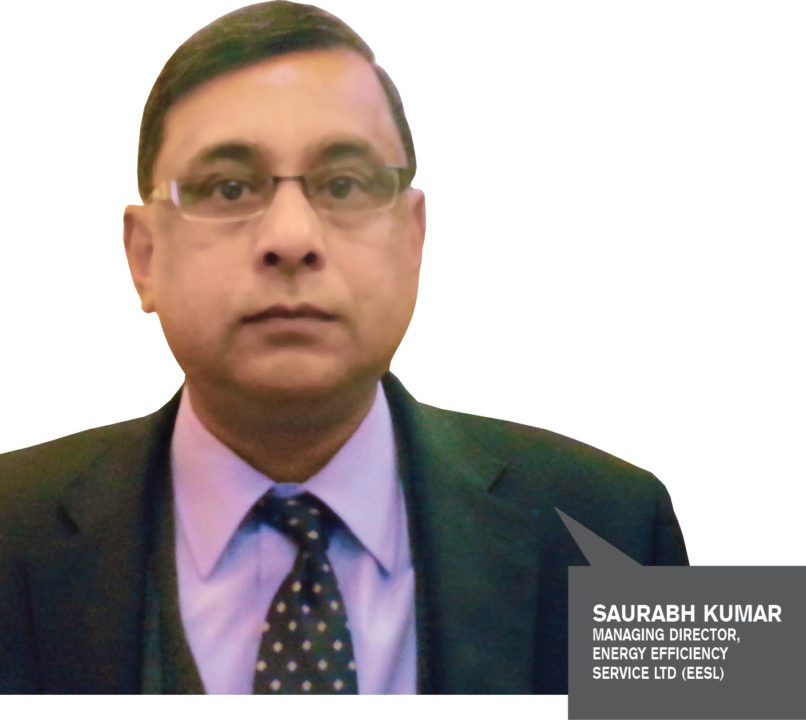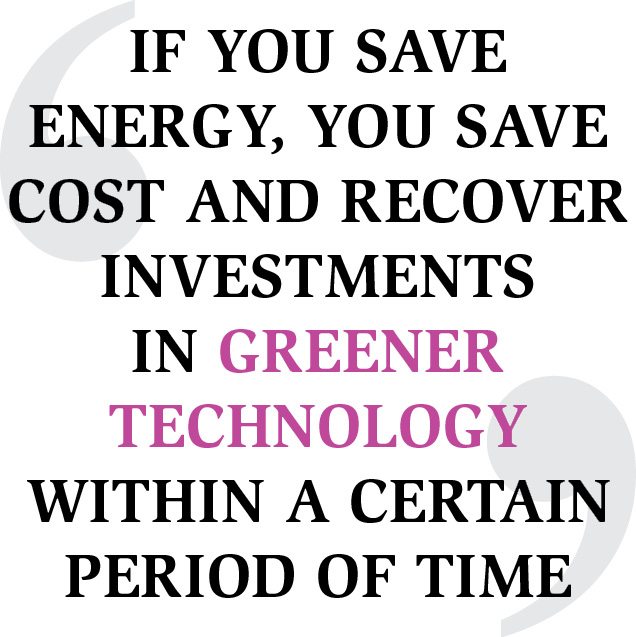A vision that both the Indian government and the industry share is to promote the use of LED bulbs. Success can be achieved by implementing the Shared Energy Savings and Guaranteed Energy Savings models designed by Energy Efficiency Service Ltd (EESL), a government-run energy services company (ESCO). Saurabh Kumar, managing director, EESL, shares his views about this model and the role of EESL in a conversation with Sudeshna Das, senior executive editor, Electronics Bazaar.
 Q. How do you define ESCO model?
Q. How do you define ESCO model?
A. Let me start with the energy conservation legislation landscape. The first and only legislation was Energy Conservation Act, 2001, which was created by Bureau of Energy Efficiency (BEE). The legislation clearly said that energy conservation is essentially a market based phenomenon. If you save energy, you save cost and recover investments in greener technology within a certain period of time.
It is a commercially-viable process, but even for that, you need to create some regulatory framework and that is why regulations were framed. Therefore BEE has created different policies, introduced several labels and set standards.
It was presumed that, just as consumers purchase energy-efficient products like five-star-rated air-conditioners, and refrigerators, institutions too need complete energy-saving solutions.
For example, an office requires air-conditioning, fans and lighting, which together need an energy-saving solution. That is exactly what ESCO does. It conducts an energy audit of your facility, suggests adopting an energy-efficient solution, makes upfront investments for it and recovers the same over a period of time, by way of tremendous savings in the energy bill.
This has not been happening in the country and therefore the government decided to set up EESL, in order to establish ESCO model in India, show results and handhold the private sector through its adoption process.
The main objective was to establish a business model that can build confidence among all ecosystems including facility owners, financial institutions and suppliers of energy-efficient products or solutions.
Q. Why did EESL focus on LED?
A. First, it is the easiest solution to implement—if I give you an LED bulb, you can just go home, fit it and switch it on.
Second, it offers tangible results immediately, which is quite important for any business.
So, if streetlights are changed to LEDs, the quality of light gets enhanced and this is visible.
We also focus on this area with the objective of establishing it as a mainstream business, handholding those in the private sector and encouraging domestic manufacturing.
Q. How does EESL facilitate this?
A. We have two ongoing schemes in the lighting domain. These target household consumers through Domestic Efficient Lighting Programme (DELP) and address the need to make streetlights more energy-efficient by working with different municipal areas.
Essentially, if you look at the lighting market in the country, it is very price conscious. The number of CFL bulbs sold every year is about 400 million, 90 per cent of which go into the domestic sector. So, in total, we are talking about a consumer market segment of 300 million CFL lighting products. Also, even when consumers want to buy LED lights, they are not sure about the returns on investment.
We came out with DELP to aggregate volumes across the country. Under this programme, we distribute LED bulbs to consumers in a way that is affordable to them and they get attracted, too.
We also create awareness by launching campaigns on how this programme can help consumers in saving electricity.
Consumers can pick up LED bulbs from our distribution centres by paying just ` 10 and the balance amount for the bulb’s price is recovered over nine to ten instalments along with the electricity bill.
As a service agency, we designed this service model and help the distribution companies to file a petition before state regulatory commissions for approval. After approval, entire roll-out, including procurement, awareness generation, planning and distribution is managed by us. Our plan is to distribute about 150 million LED lamps by 2015 end.
We have linked distribution with the unique consumer authentication number of the electricity bill. Only four bulbs are distributed against each bill. This helps check the propensity for unauthentic reselling of distributed bulbs.
In streetlight programmes, we are dealing directly with municipal corporations. Otherwise, the model is the same.
Q. How do you ensure the quality of the distributed LED bulbs?
 A. We have a very robust quality control system that operates at three stages. In pre-procurement phase, bulbs are tested at NABL-accredited laboratories.
A. We have a very robust quality control system that operates at three stages. In pre-procurement phase, bulbs are tested at NABL-accredited laboratories.
Second, we do random quality checks during procurement.
The third is that, we have found a unique way of controlling quality. With all suppliers, we keep around 50 per cent of the contract value as a bank guarantee over the warranty period. For example, if the warranty period is eight years, it is kept for eight years. If it is a ` 1 billion order, you need a bank guarantee of ` 300 million to ` 400 million.
Because to the three-stage quality-assurance system, total number of failures was only 500 out of eight million distributed bulbs.
Q. How does EESL promote Make in India?
A. We follow the government’s guidelines for the same. Suppliers of LED bulbs under different EESL programmes need to have a manufacturing unit in India.
In addition to that, if the wafer of the bulb is manufactured in India, the supplier will have special procurement preference. Unfortunately, no company manufactures LED wafers in India, currently.
Even the bidding price is so controlled that it is hardly possible for traders, who just import and package the products here, to meet our requirements. Therefore most bids are won by domestic manufacturers because companies can reduce costs only when they have a domestic manufacturing facility.
Therefore only domestic manufacturers will be able to compete in this market. Moreover, in order to encourage small-scale local manufacturers, in particular, 20 per cent of our orders are reserved for them. This, in turn, encourages new brands and offers new opportunities for upcoming enterprises.
After following these guidelines, the number of manufacturers has doubled in the last three years.
Our programmes also help companies to enhance brand visibility among consumers through our distribution system. As we directly reach end consumers, the brand connect happens.
Q. What is your vision for LED lighting ecosystem in the country?
A. EESL runs one of the largest LED lighting promotional programmes in the world. The other large programme was in China, where the government provided a subsidy of US$ 300 million.
Under EESL programme, over the next two years, we aim to distribute about 200 million LED bulbs and nine million streetlights. Total investment will be US$ 1.2 billion.
Our priority is to change consumer behaviour towards buying more energy-efficient LED lighting products and make it a national priority. Therefore we work more as a facilitator rather than a regular seller.






